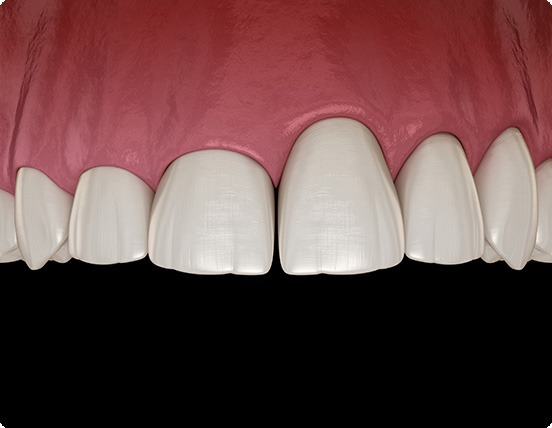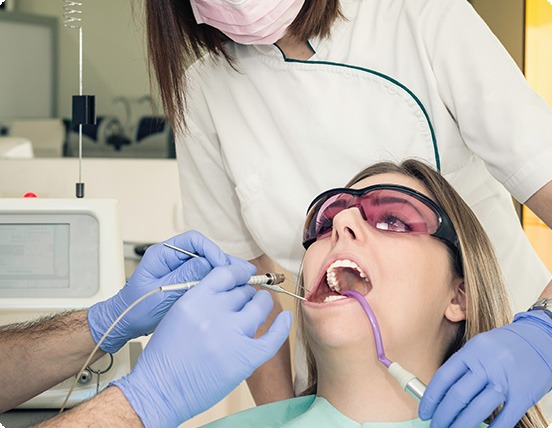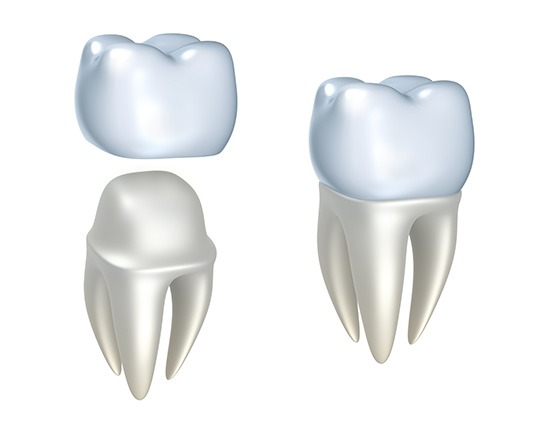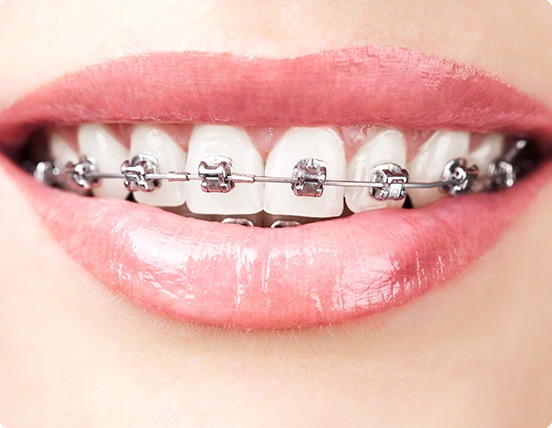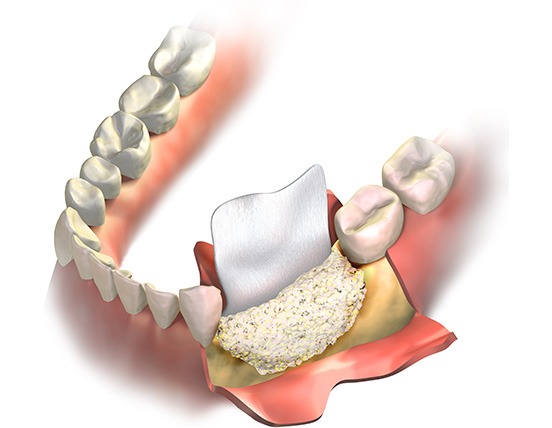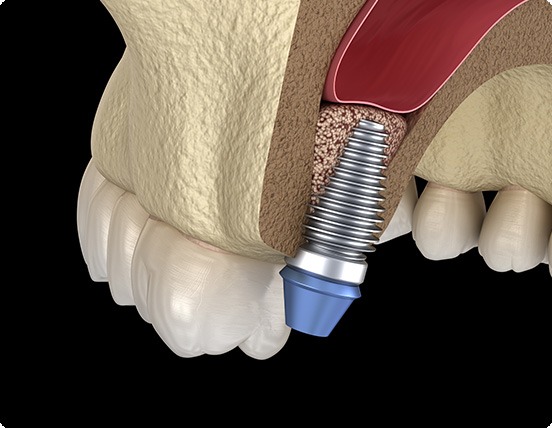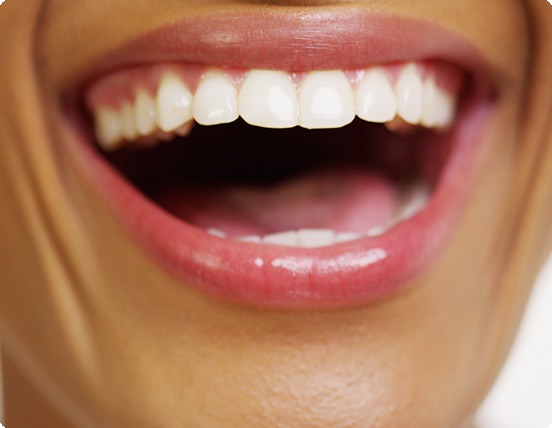Many people suffer from a gummy smile, which means that your smile reveals more of your gums than you would like, caused by an excess of gingival tissue partially covering the crown of teeth. A gummy smile can affect one’s confidence and discourage people from smiling and showing off their pearly whites. If a gummy smile is something you would like to correct, there are many options available that can help, including a gingivectomy, crown lengthening, orthognathic surgery, lip repositioning, and Botox. Crown lengthening involves removal of the excess gum tissue and removal of the excess bone and shaping the jawbone. Whether both stages need to be completed, or just one, depends on each patient and how much excess gum tissue there is.
Gingival surgery is usually the most often recommended treatment for a gummy smile. Also known as gum contouring, it involves the removal of extra gum tissue to reveal more of your teeth’s surface. There are several different methods that can be used to remove the tissue so that it reveals more of the teeth and fixes the situation of a gummy smile. Using either a scalpel or laser, your gums are reshaped or trimmed to reveal more of the surface of your teeth, giving you the smile, you want.
Botox injection can be used for a gummy smile that involves overactive lip muscles.


